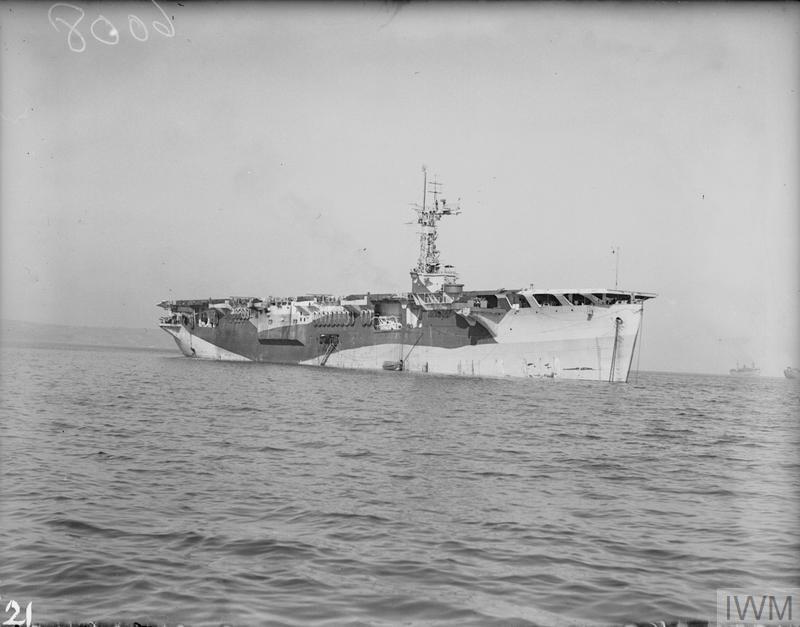HMS Campania
HMS Campania was an escort aircraft carrier of the Royal Navy that saw service during the Second World War. After the war, the ship was used as a floating exhibition hall for the 1951 Festival of Britain and as the command ship for the 1952 Operation Hurricane, the test of the prototype British atomic bomb.
She was built at Harland & Wolff shipyards in Belfast, Northern Ireland. When construction started in 1941 she was intended as a refrigerated cargo ship for transporting lamb and mutton from New Zealand, but was requisitioned by the British Government during construction and completed and launched as an escort carrier, entering service in early 1944.
Campania operated escorting convoys and doing anti-submarine work in the Atlantic and Arctic theatres. In December 1944, her Swordfish aircraft from a detachment of 813 Squadron sank the German submarine U-365 while the Campania was escorting the Arctic convoy Convoy RA-62.
The ship survived the war, and unlike other Royal Navy escort carriers, was not immediately scrapped or sold. She was briefly used as an aircraft transport before being decommissioned and placed in reserve in December 1945.
In 1951, she was the Festival of Britain’s exhibition ship, touring the country’s ports with a civilian crew as the Festival Ship Campania to supplement the main exhibition in London and two thousand local events.
With the festival over, the ship was refitted in Birkenhead for a very different role, as the command ship for Operation Hurricane, the test of the first British atomic bomb on the Monte Bello Islands off western Australia. The refit saw the exhibition replaced by workshops, laboratories, offices and cabins, plus a desalination plant since the Monte Bello Islands did not have any indigenous fresh water source to supply the 1500 personnel who would take part in the test.
The ship was decommissioned for the final time in December 1952 following her return to the United Kingdom, and sold and scrapped in Blyth in 1955.













